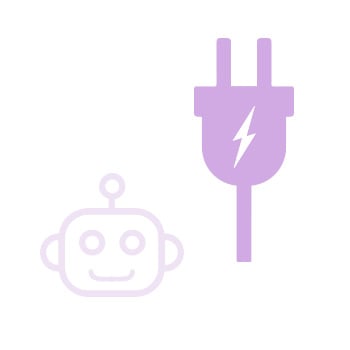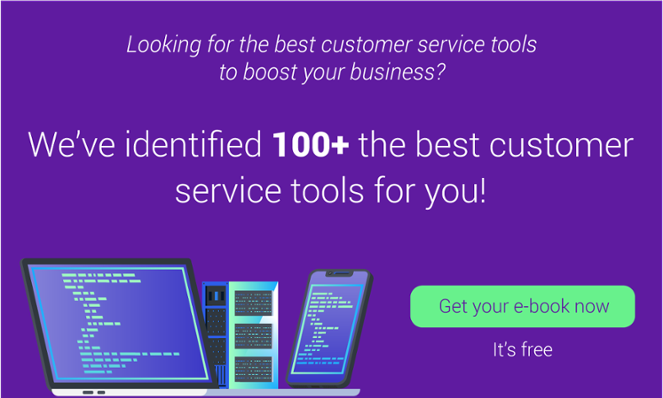
by Teemu Kinos
on May 22, 2019
Humans and AI: The Ultimate Dream Team
As the lives of humans become increasingly interlinked with artificial intelligence and machine learning, we still yearn for human interaction and that human element in our daily lives.
In customer service, 35% of consumers identify the loss of the human touch as the biggest concern with AI customer service. On the other hand, 43% of millennials and 28% of business managers have said that they would pay a premium for a service run by AI that offers direct access to humans when required compared to a human-only approach.
According to PwC, consumers say the top benefits of digital assistants are:
- Save time
- Help to get things done
- Remind of calendar events
- Send proactive alerts
- Give more time to focus on thinking and creating
Artificial Intelligence (AI)
24-hour service
A great example of how machines benefit us is in customer service. Increased globalization means that brands are connecting with new audiences more than ever before. How are they supposed to cope with the influx of people who need quality customer support at all hours of the day?
Machines don’t fatigue. They don’t tire, and they don’t get bored. Not only can AI automate and handle many of the scenarios it faces in customer support but it’s also able to communicate in much the same way your brand communicates. In fact, one study shows that 27% of consumers weren’t sure if their last customer service interaction was with a human or a chatbot.
Now, instead of being repeatedly asked when a store’s opening hours are, customer representatives can spend more time handling tougher cases that require human empathy and life intelligence.
Speed
As highlighted by the Vodafone Institute, a startup specializing in AI-driven contract reviews for law managed to whip a team of 20 experienced human lawyers. The AI demonstrated an accuracy score of over 94% vs. 85% for the humans, and an average time of 26 seconds vs. 92 minutes for the humans.
This is but one example of how technology is being applied to speed up processes for humans. From engineering and law to chatbots and art, AI’s capabilities are making huge waves.
Consistency
Do you have a good memory? Ever forgotten to send that report you promised on Friday or forgotten to call your colleague back?
As humans, quite a lot of the information we come across slips through the cracks. We might even recall memories differently to suit our personal needs.
Machines, on the other hand, have perfect memory recall. They provide extensive data logs for each and every event that occurs and can highlight it in just a few clicks of a button. This helps us to provide unbiased and factual information to make better data-driven decisions, improve accuracy, and save time.
Accuracy & Safety
Today, machine translation and transcription tools, for example, still don’t cut it against a human translator/transcriber (we’ve all used Google Translate and know it’s not always the best). But what it can do is to speed up the process and assist with the editing and reviewing by a human translator. By handling the repetitive and monotonous work involved, the translator can ensure higher quality while decreasing the turn-around time for their clients.
Meanwhile, medical centers in the U.S. are using robotic technology and electronics to prepare and track medications to improve patient safety. In over 350,000 doses prepared by the robot, not a single error was found.
Additionally, machines can be built to be impervious to the cold, heat, chemicals, and many other scenarios that are too dangerous for humans to safely function. This could lead to the creation of a services-only type of workforce.
Impact on the lives of humans
Improve employee engagement
According to a study by Gallup, an astonishing 87% of employees worldwide are not engaged at work. AI has the power to mitigate this.
Employers that listen to and understand their employees’ needs have higher employee engagement rates than their competitors. Sir Richard Branson, the founder of Virgin Group, has always emphasized an employee first system. He highlights that by taking care of employees at Virgin, everything else will take care of itself. Happy employees = happy customers.
Use AI to gather employee feedback, to see how they feel about the company, their work, and overall morale. In doing so, employers and employees can adjust their practices as required to best suit the business, become more productive, and are less likely to leave in the long-run.

The technology is also able to identify and solve problems relating to HR. Any issues related to health insurance, salary payments can be spotted and fixed much faster using AI to keep your employees happy and satisfied.
Reduce boredom
Some jobs, while critically important, just aren’t very exciting to perform. There’s an inevitability that boredom will set in over time. By automating dull and tedious tasks with AI, employees are likely to be happier, more engaged, and can develop/learn skills in new and more interesting aspects of their work.
Create time for more life experiences
This is one of the ultimate benefits of automation using AI and machine learning. Rather than expecting AI to function on its own, the technology is arguably more powerful when used to augment human decision-making and processes. It should be applied in a human-first approach that highlights the values of the employees above the scope of the technology.
AI will increase the success of the collaboration, information sharing, experimentation, and learning for humans in an exponential way. It has the power to help us become better individuals and improve society as a whole.
Human-directed AI
At GetJenny, our core belief is that humans do it better. We believe machines aren’t out to replace people – we believe they are best used to augment the lives of humans and create more time for empathy and enjoying life. The implementation of our AI chatbots has also led to the rise of a whole new job category for customer representatives called “bot whisperers.”
If you’re interested in learning more about how your team can develop and run a successful chatbot project for customer service operations, watch our free webinar to find out more information.
As honesty is our core value, we’d like to mention that professional writers have helped us
with this text.

Teemu Kinos
GetJenny CEO & Co-founder
Similar articles

Chatbot Case Studies for Media and Entertainment Companies
How can media and entertainment companies keep up with customers? Learn how chatbots help service teams stay on track and serve customers better.

4 Things You Need to Know When Considering Chatbots
Ersin walks through the surprising opportunities potential chatbot customers miss in their chatbot project planning.

Infographic: Customer Experience in the Energy Sector
Key insights for customer experience in the Energy and Utilities sector in a handy one-sheet. Get the facts and numbers in one place.



